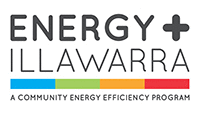SOLAR POWER
There is good news if you are interested in getting a solar power system. Prices keep falling, the technology keeps getting better, and the upfront costs are getting lower. This means that the payback period from installing a solar power system is reducing.
ISN’T SOLAR EXPENSIVE?
The past 5 years has seen a dramatic fall in the cost of solar power systems, and particularly rooftop solar panels. Falling manufacturing costs are pushing this trend, in turn driven by improving manufacturing techniques. Already today solar panels only cost around 60c per kilowatt peak capacity in Australia, and the cost of the panels themselves is no longer the main cost for installing a solar system.
So, while solar buy back rates might change, the key benefits of solar power systems is not all about selling energy back to the grid, but in producing energy you can use in your home.
RENTAL SOLAR SYSTEMS
Some of the major energy providers have recently launched rental schemes for solar power systems. Generally the plans include installation, monitoring and ensuring the system performance is maximised for the duration of the rental. Some plans exist with $0 upfront cost; you simply pay for the power that is produced. Plans are offered for a variety of terms with 7, 10 or 15 year plans currently available. Read the conditions carefully for how you can opt out or transfer the system to new owners if your circumstances change or you move houses.
BATTERY SOLAR SYSTEMS
Technology is improving! There are now solar power systems available that can store the energy produced in a battery for use when you need it at any time of the day or night. This can really help you save on your energy bills as you can use solar energy at night when energy use in the home is often greater and when energy tariffs are often higher. Search on www.solarcitizens.org.au for more details.
SOLAR ENERGY MONITOR
If you do install a solar power system consider purchasing a Solar Energy Monitor – which currently cost around $250 (Dec 2015). Some of these monitors have a handy feature that lights up green when your solar power system is producing more electricity than is being used in the home. This surplus of solar power means it is a perfect time to do your washing, use the dishwasher, or any other activities in the home that use electricity.
DIRECTION OF PANELS
In general you want to make sure that your solar panels are installed on the sunnier side of the roof of your home. However, it is also worth considering what time you normally use energy in the home.
If you are often at home and use more energy during the day then it is best to have your solar panels facing north.
If you are out a lot during the day and normally use more energy in the evening then it is worth looking into battery storage systems as they emerge.
